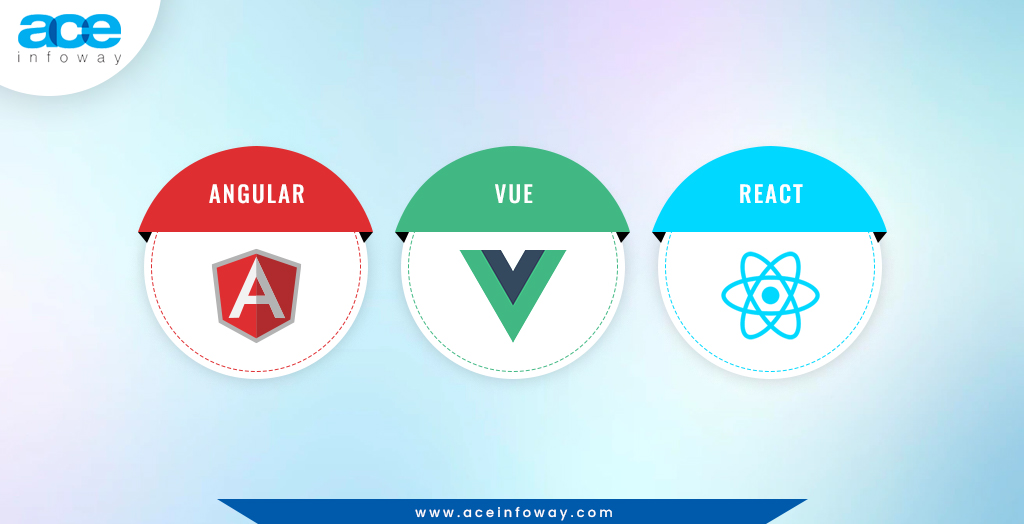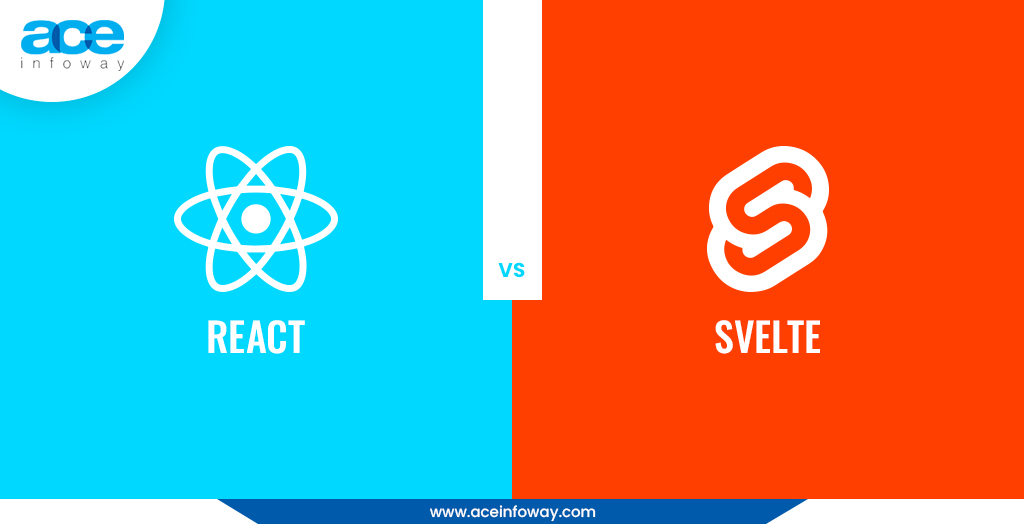Table of Contents
Angular vs Vue vs React – In-Depth Comparison
With constant technology upgradation, there are many programming languages but for functionality and a wide range of features gets JavaScript ahead of the game. Now, the selection of the framework that goes perfectly with JavaScript becomes the bottom line for any progressive web application development.
So let’s pay attention to the statistics of the top three frameworks – Angular, Vue, and React, that showcase huge competition in progressive web app development.
Angular vs Vue vs React – Statistics
The data from Builtwith describes that Angular vs Vue vs React kicked off meticulously in 2018 and from that point on till today, the impressive growth of React was observed in terms of downloads. Vue clutches the second position with the recent acceptance in comparison to Angular.
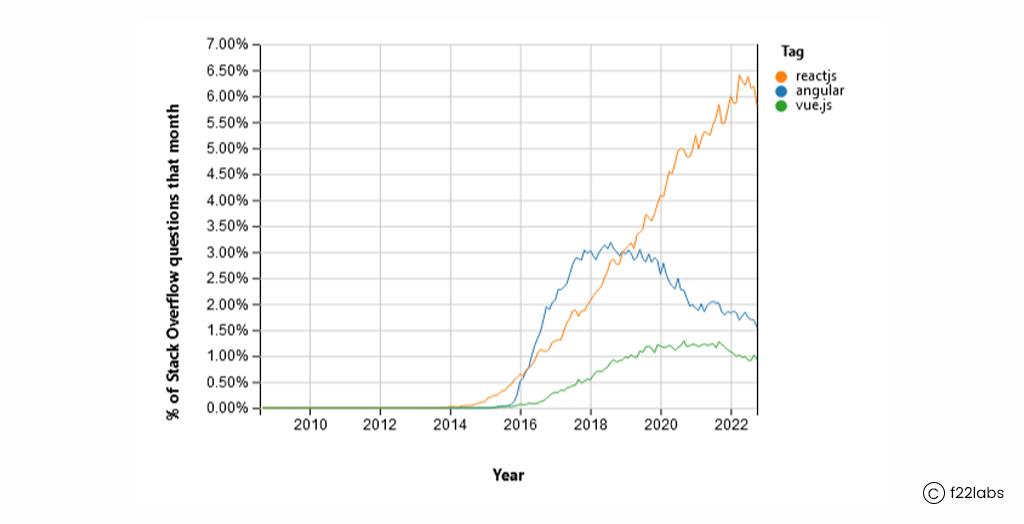
However, Stack Overflow Trends revealed a colossal upsurge in Angular exploration in 2016, while React persists the marketability since 2015 as yet.
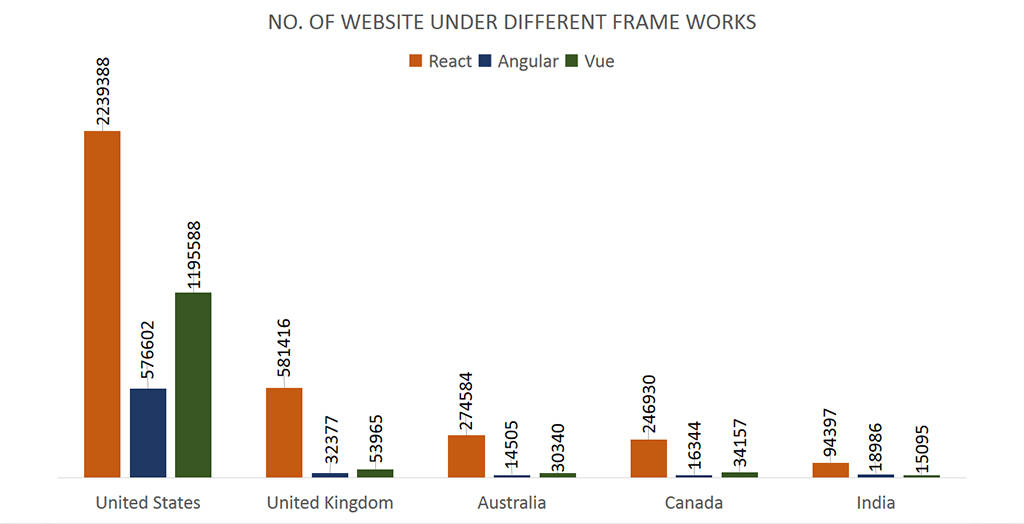
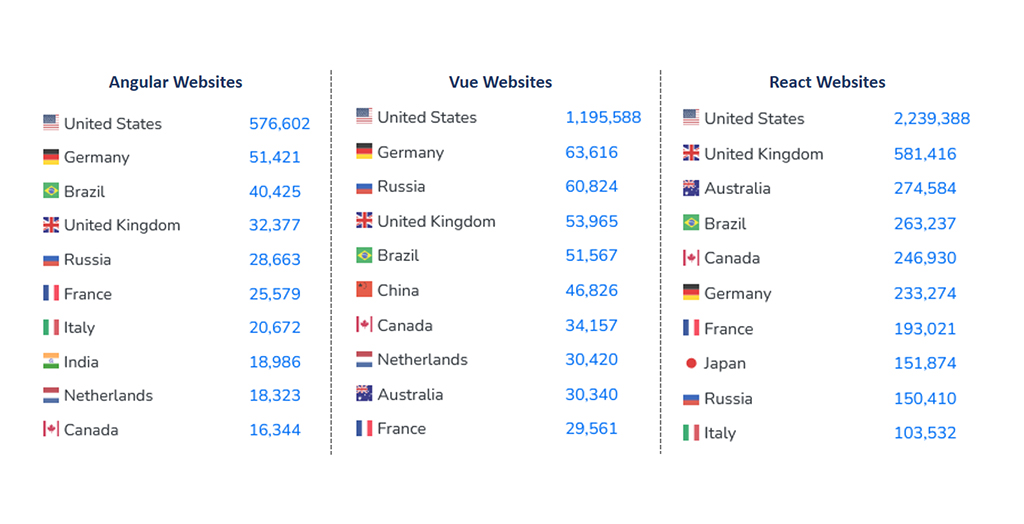
Moreover, considering the usage statistics of React, Angular, and Vue, it becomes evident that different countries utilize different frameworks for their website generation. It is observable from the numbers that React is the most used framework for countries including the United States, United Kingdom, Australia, Canada, and India. Also, it extrapolates Vue to overtake Angular in utilization for website building.
All three frameworks are judiciously distributed over the globe for different requirements of websites. Let us now analyze these three frameworks technically to have a better idea for their deployment.
Angular vs Vue vs React: Technical Comparison
- Architecture
Not following any specific pattern, React begins with a single root component with the capability to be nested with another component. Contrarily, Angular follows but is not restricted to Model-View-Controller architecture. Whereas, Vue being a progressive framework extends its functionality and follows the Model-View-View-Model pattern.
- Popularity, Community, and Development/Ecosystem
React uses JavaScript logic (JSX) combined with UI templates as the scripting language. Having gained huge popularity, some use cases for React as front-end development include Uber, Netflix, and The New York Times.
Alternately, Angular uses MEAN (MongoDB Express Angular Node.js) stack to develop Full Stack Web Applications where Angular supplies all the needs in UI and aids in developing an excellent, consistent, and fully functional UI. As useful for creating larger applications, a few use cases for Angular include Google, Upwork, and MS Office.
Vue meanwhile uses HTML-based template syntax with input components and advanced elements to speed up the development process. Rising in popularity owing to quite good ratings on GitHub, companies like Nintendo, Adobe Portfolio, and Behance are utilizing Vue now for their front-end development.
- Migration/Version Upgrade Process
Angular projects its major updates every six months; hence, when compared with the other two frameworks, stability plays a vital role. Along with these upgrades, versions are generally the easiest with React as it provides scripts like react-codemod that make the migration easier. Like React, Vue also does not have any fixed release cycle, however, new features are being added about every 3-6 months.
- Size and Load Times
Due to standard caching and minification, the sizes of libraries don’t bother the user. Even though there is a significant difference in the sizes of these frameworks, all are still small compared to the average webpage size of 2 MB. Also, the load time of these libraries is highly influenced by CDN usage.
- Components
Angular refers to its components as directives, which are just markers on DOM elements. Thereupon, in Angular UI part of the components are separated as attributes of HTML tags and the behavior in the form of JavaScript code. This differs in React as the same part of the code is responsible for creating a UI element and also imposing its behavior. Same in Vue as it combines the UI and behavior of components from within the script.
- Advanced Features
React displays the ‘Learn Once, Write Anywhere’ feature along with a declarative view for each state. It also has virtual DOM to update the developer’s modifications quickly. Alongside, Angular leverages a variety of features including typed forms, standalone components, streamlined page title accessibility, extended diagnostics, and many more. Meanwhile, Vue also includes two-way data binding for HTML interface manipulation and virtual DOM.
Comparison Table
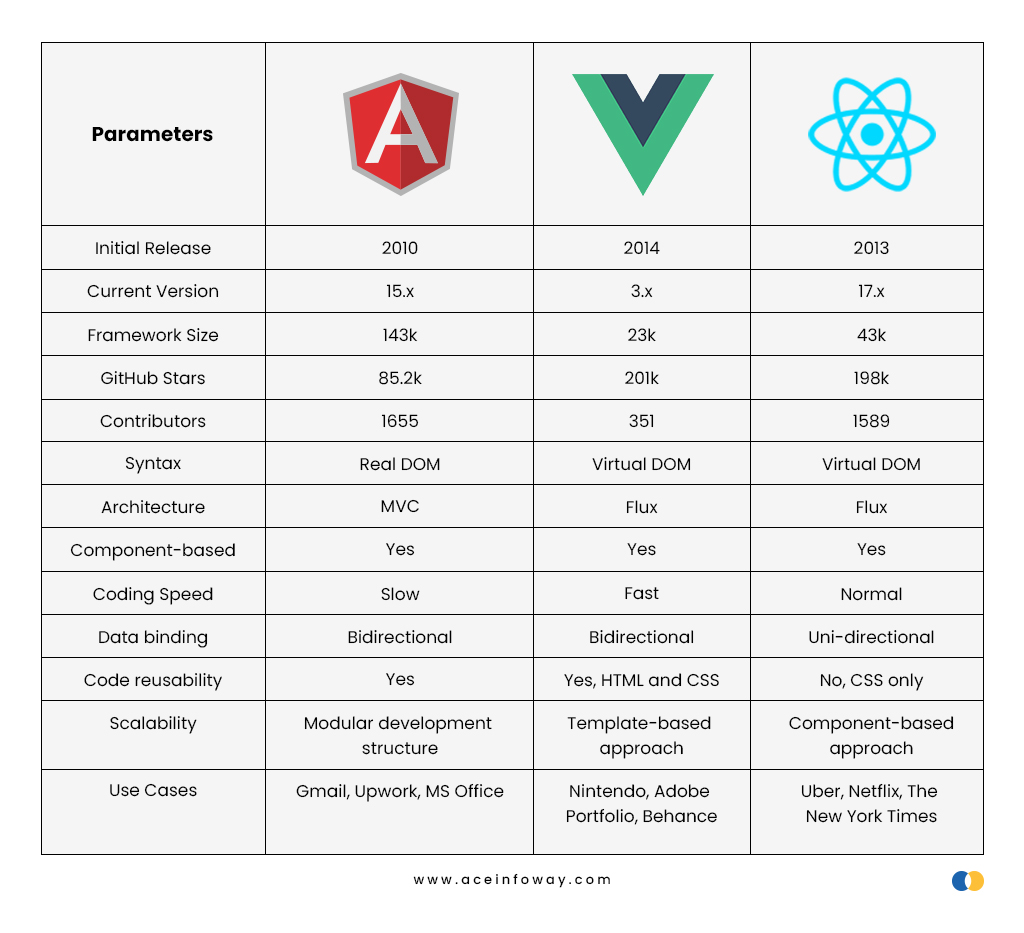
Angular vs Vue vs React: What’s Best for Progressive Web App (PWA) Development?
Since its emergence in 2015, Progressive Web Applications has proven to be a grand slam in businesses. Similarly, the top frameworks contribute to account for the development of a brilliant design of PWA. Here are the opportunities and obstacles of the top three frameworks, Angular, Vue, and React for PWA development.
Angular for PWA development
Opportunities:
- Easy implementation
- Clearly defined methodology
- Excellent CLI workflow enhancements
- Extensive developer support with timely troubleshooting
- Effective cross-platform development
Obstacles:
- Requirement to learn TypeScript for web application code
- No standardization of codes makes it quite complex
- Limited SEO-friendly

Angular Clean Code Checklist
Get your free copy
Use cases of Angular for PWA development:
Larger enterprises with the feature-rich project, more complex apps, and that require a large amount of programming codebase can swiftly work out with Angular.
Example: Google Cloud
Vue for PWA development
Opportunities:
- Easy in learning
- Flexible and intuitive approach
- Faster and simpler development approach
- Highly customizable
Obstacles
- Poor code quality
- Difficult to debug
- Nascent implementation
- Limited users, libraries, and very less third-party support availability
Use cases of Vue for PWA development:
Start-up businesses that want a high-performance implementation yet a light application, specifically for single page apps, can catch up with Vue web development.
Example: Zadig & Voltaire
React for PWA development
Opportunities:
- Leverages native API
- Bestows comparable appearance and feel like a native app
- Extremely adaptable, expandable, and scalable
- Allows creating API integrations, static and server-side rendered web pages, and routing
- Reduced rendering time
Obstacles:
- Requires a thorough understanding of JSX
- More flexibility suffices more functionality issues
- Imprecision in methodology causes difficult implementation
- Minimal SEO-friendly
Use cases of React for PWA development:
React is most preferable for small to medium-sized projects categorically expecting high-performances in tight timelines.
Example: Twitter Lite
Final Words
Angular, Vue, and React turns up quite inclusive and developer-friendly to be used for any Progressive Web Application project. However, the selection of the right framework for your project uniquely leans on its directive use.
For the most part, there are some circumstances that you need to consider, before choosing a framework:
- The scalability and scope of the framework for your project
- The experience of the developer with the framework
- The right aptitude to work on the framework for the specified project
At Ace Infoway, web developers are experts in comprehending the fast, accurate, yet simpler techniques to create a compelling progressive web application. Our team is rightly a go-to technology partner that offers a wide range of assistance in web & mobile app development services.
Connect with us to have the one-stop solution for all your Web, Mobile, and Software development requirements.









